When was the last time you did something you were afraid of? When did you say ‘sign me up—I don’t know what I’m doing, I know I’m going to be uncomfortable, I’m not even sure I can do it, but I’m going to give it a try?’ That was me when our family decided to do a Boundary Waters canoe trip in 2021. I didn’t know what I was doing. I knew I would be uncomfortable, since I don’t really know how to swim and I’m afraid of deep water. And how would I even keep up with the more experienced and younger people? (Thankfully those people were my family.) But I said ‘sign me up.’ That’s the definition of courage, though I was certainly not feeling courageous at the time. According to exploreratlarge.org, courage is the cornerstone quality, along with curiosity, of being an explorer. And there is hardly anything that makes a person feel more like an explorer than packing your needed goods into a canoe and paddling through the Wilderness! But there was another explorer quality that actually got me through the very difficult first days, and that was persistence. I know about persevering through adversity—it’s a life lesson that comes with age and circumstances. In spite of how difficult it was physically and how overwhelming it was at times emotionally, I kept at it. And my son Aaron gently pointed out that there was no other choice—I was sitting in a canoe in the middle of a lake in the wilderness. I couldn’t give up.
We humans are a part of the Animal Kingdom where persistence is demonstrated daily by our animal friends. One creature that quietly carries on with persistence is the Beaver. Their whole livelihood is defined by their persistent behavior of gnawing down trees with their teeth, cutting the tree into manageable sizes, then moving those pieces from land to water in order to build a dam or build a lodge.
Our second hike at Savanna Portage State Park was Beaver Pond trail, a short half-mile trek around the beautiful pond that housed three beaver lodges. The pond was like the bottom of a bowl—the land curved up and around it in a protective way, so most of the time we were looking down at it. Despite our vantage point, we didn’t see any beaver activity of any kind. We saw the lodges and the pathways through the rushes where they could swim and move logs.
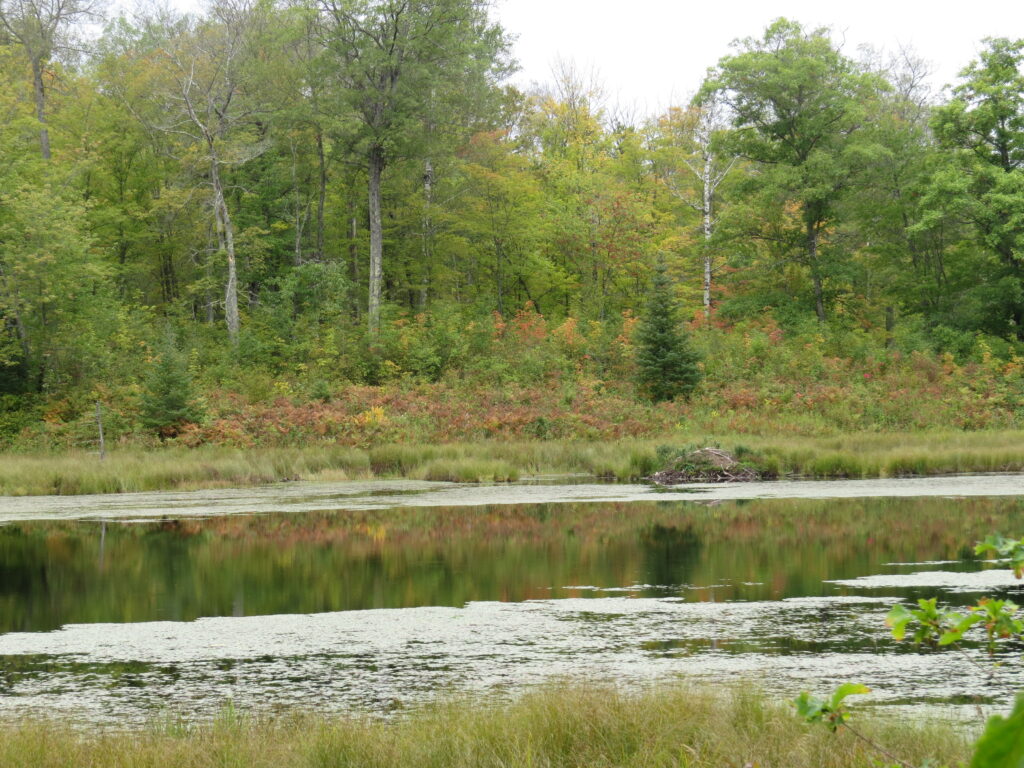
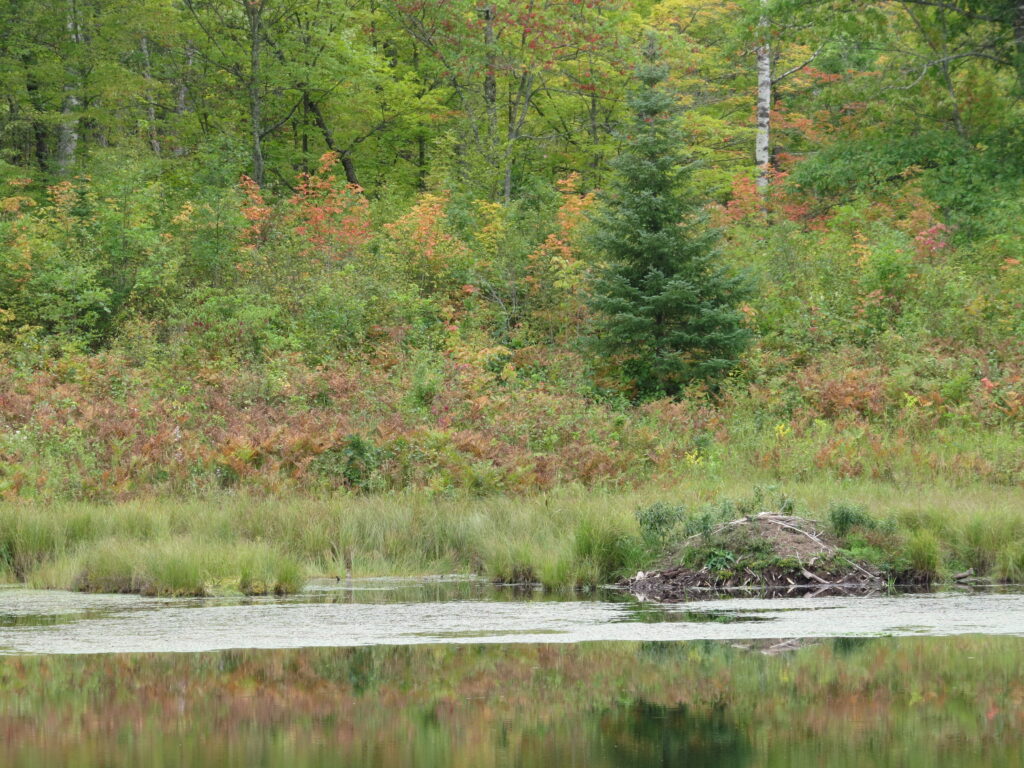
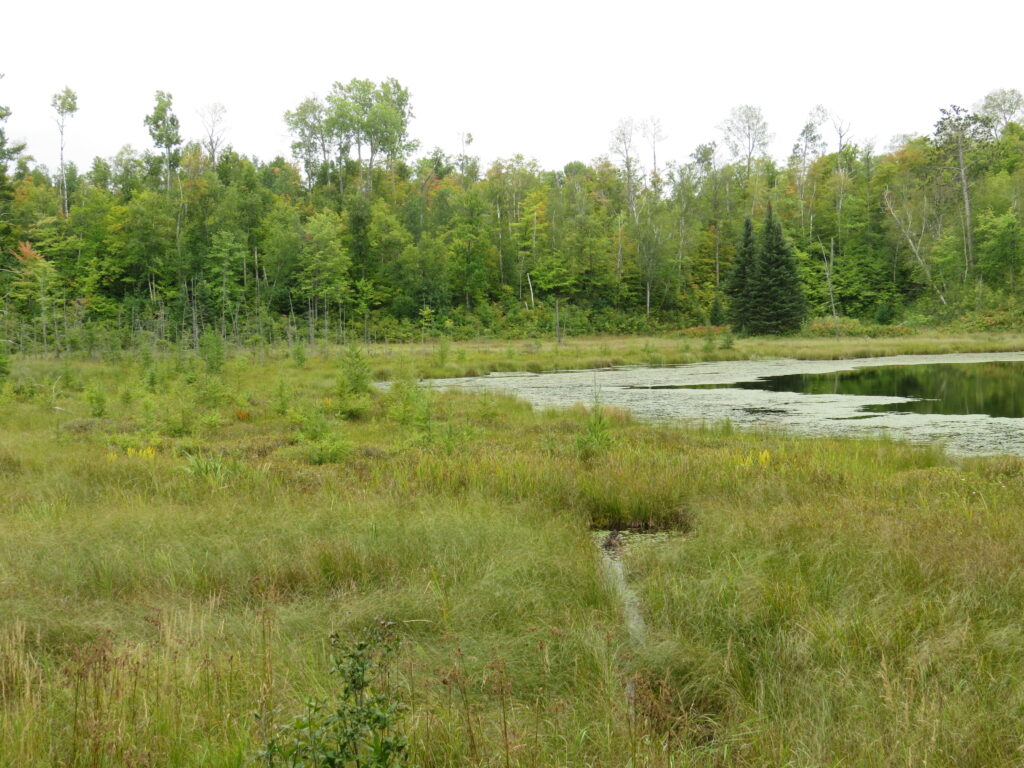
The second lodge was very large and well established, with vegetation growing on most parts of it. But there was a ‘new’ part with additions of logs—I guess a beaver’s house is never finished.
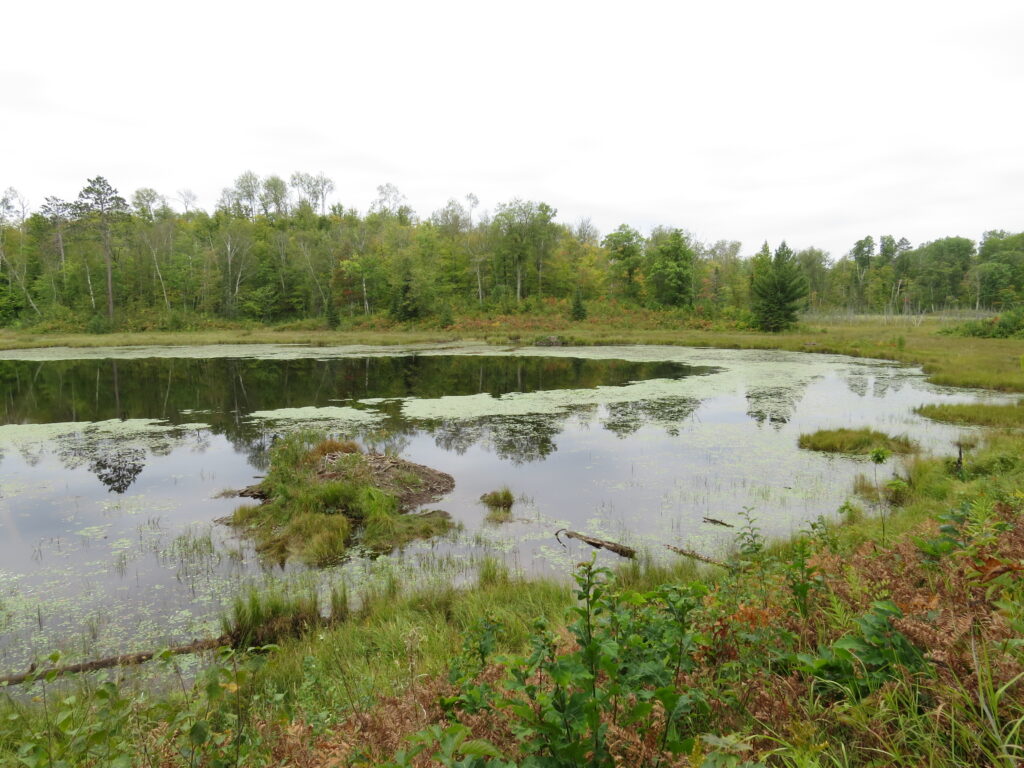
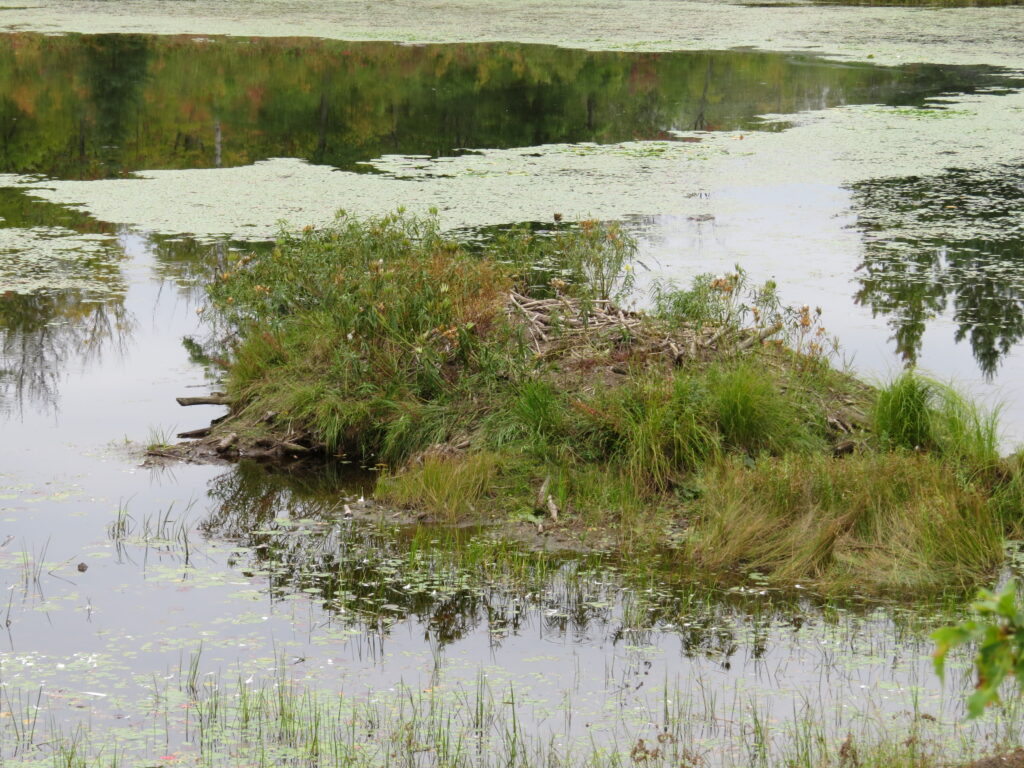
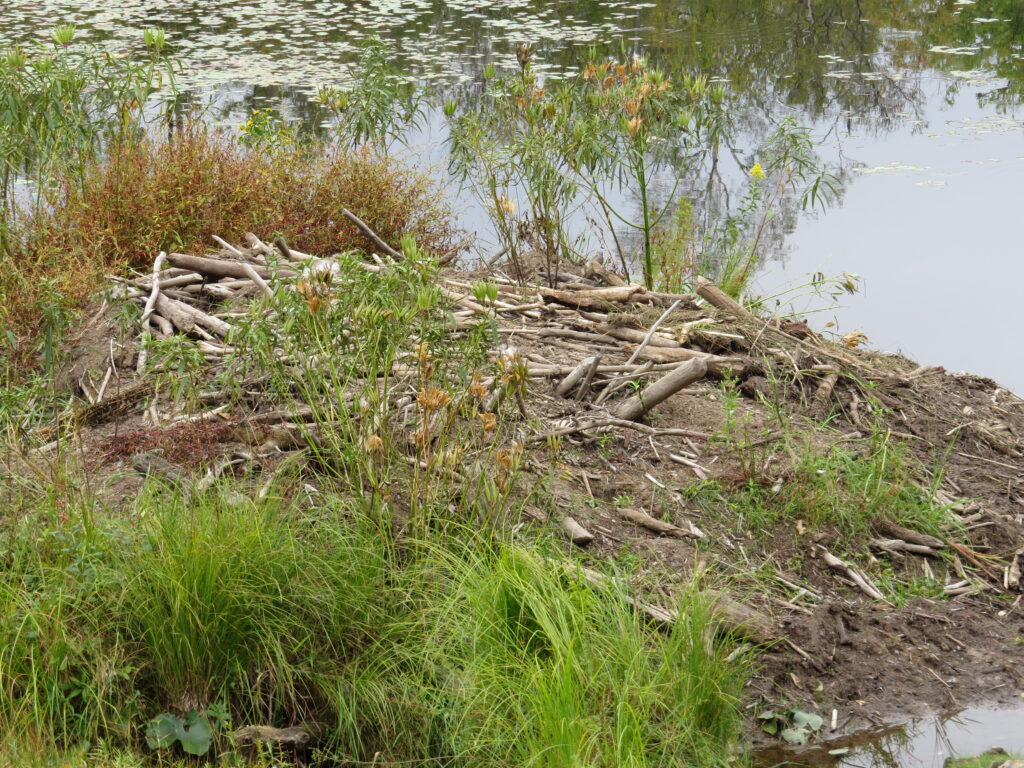
The lily pads had begun their annual color change along with the trees, shrubs, and other plants. Autumn in the pond.
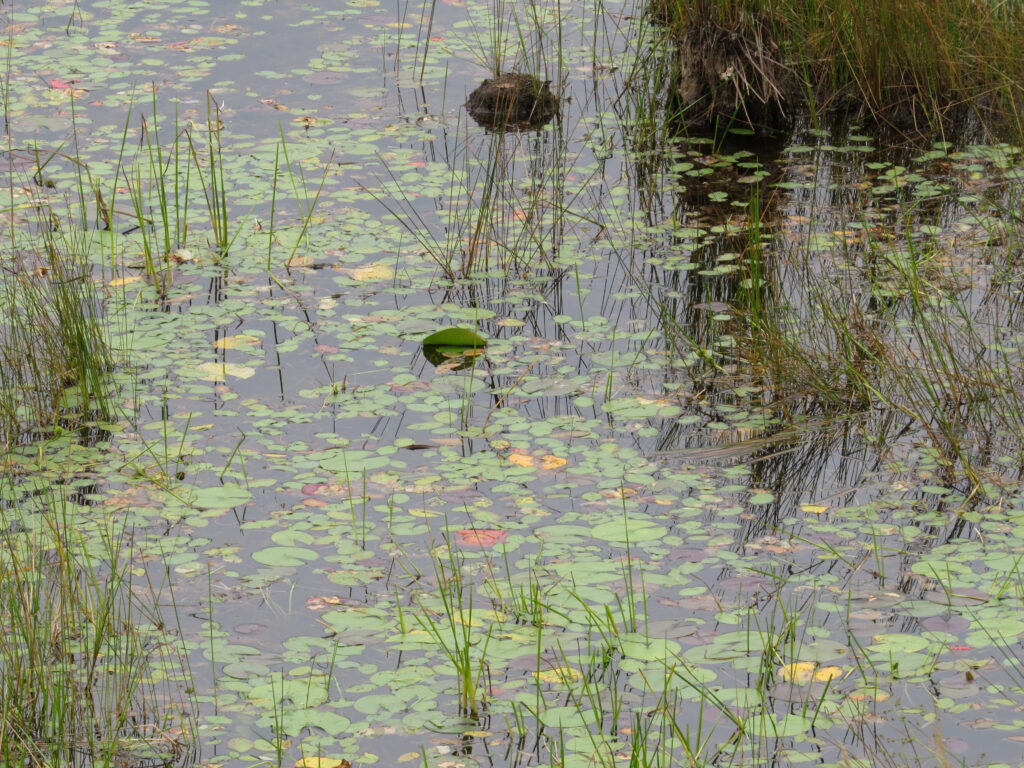
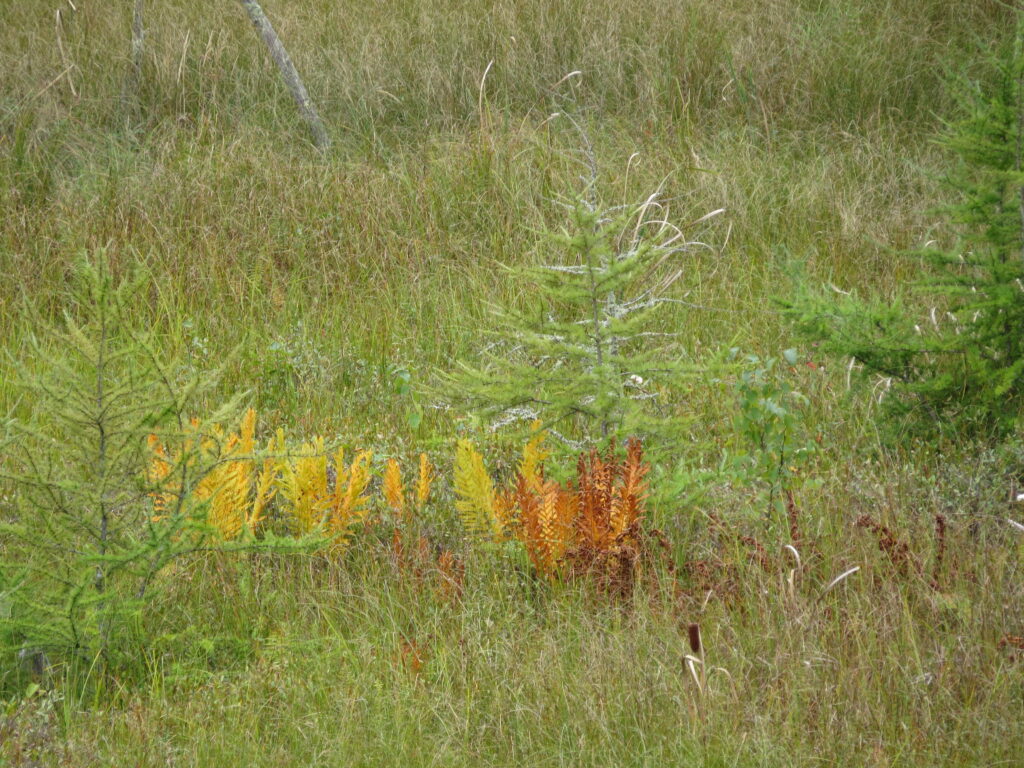
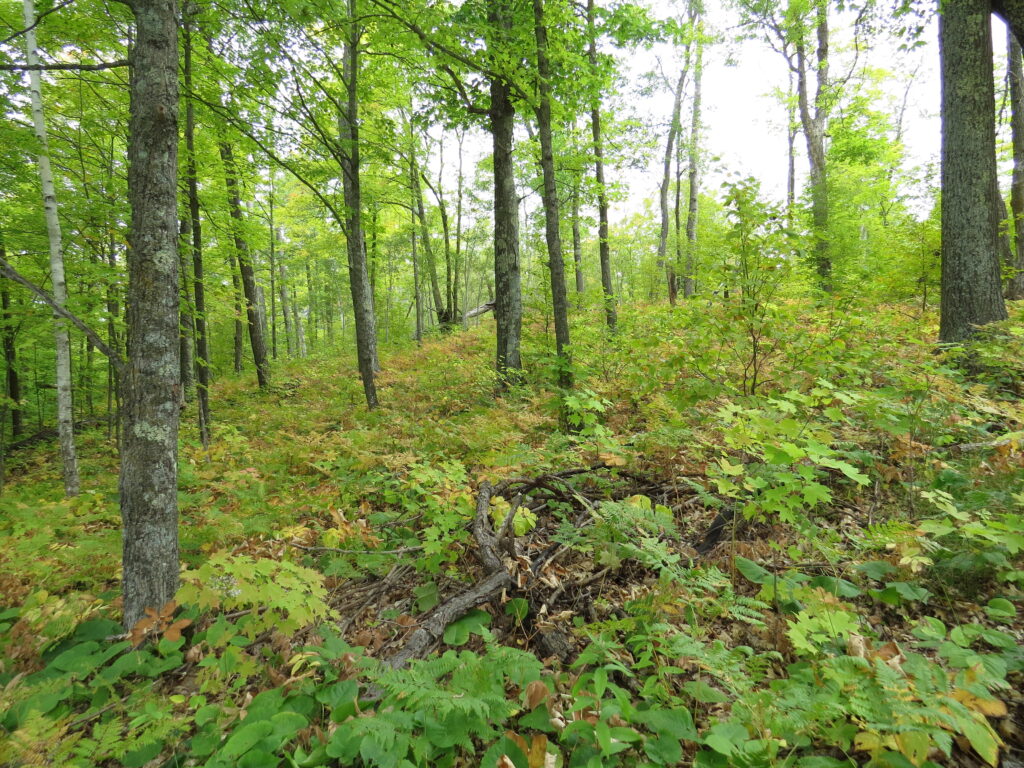
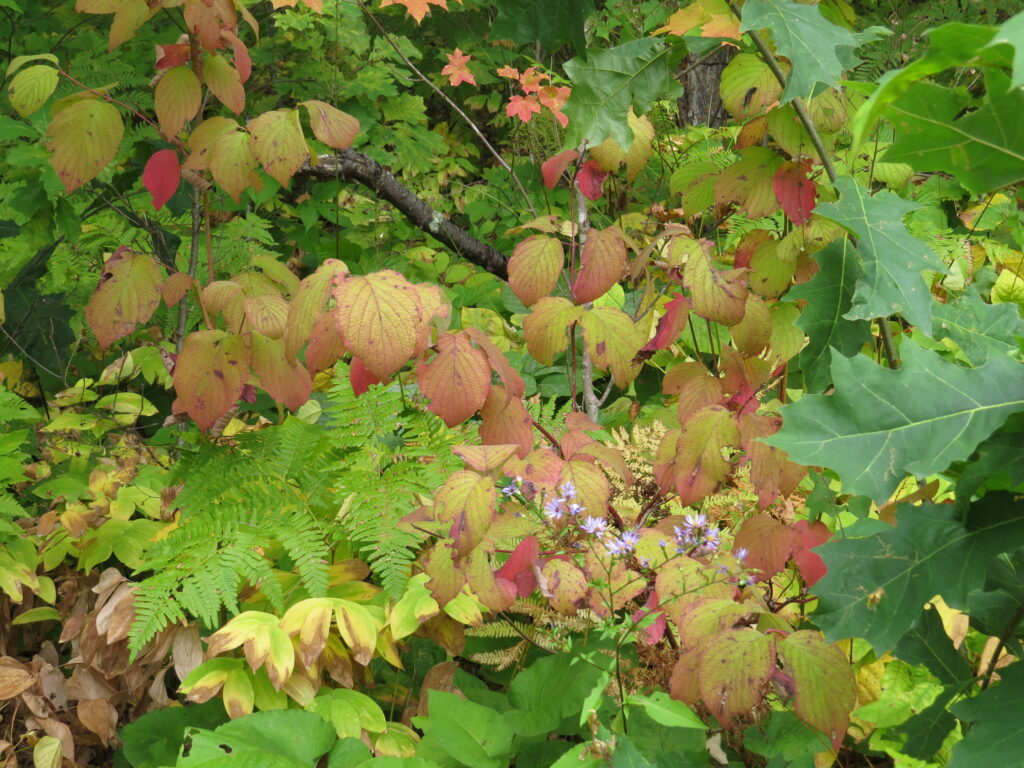
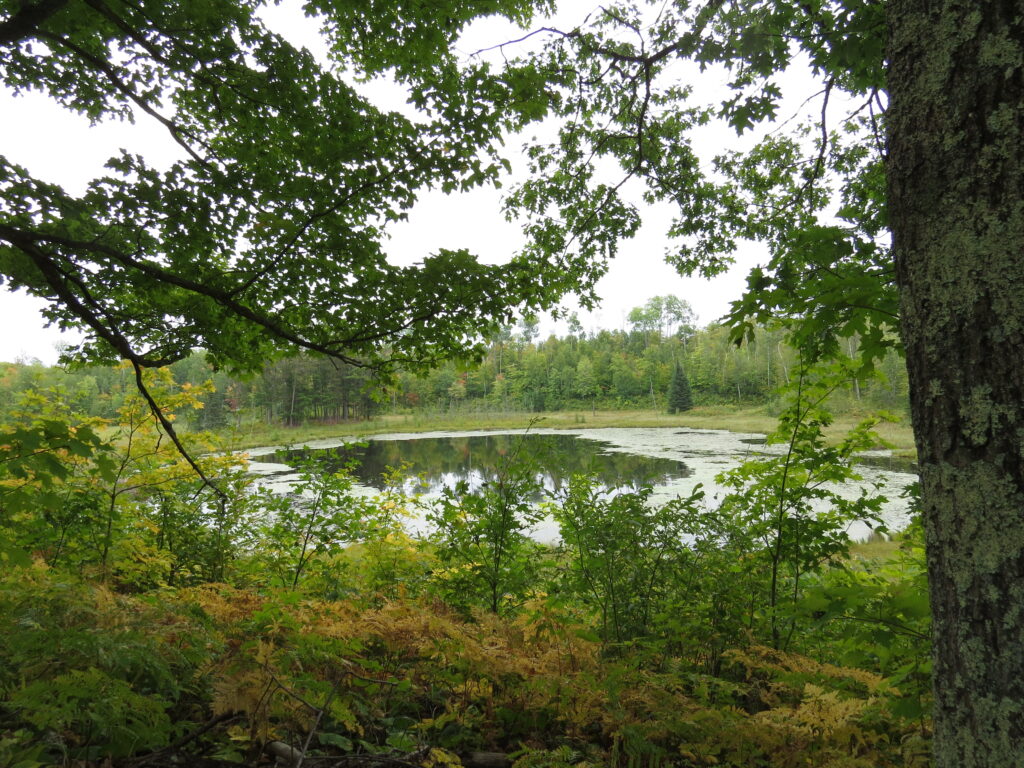
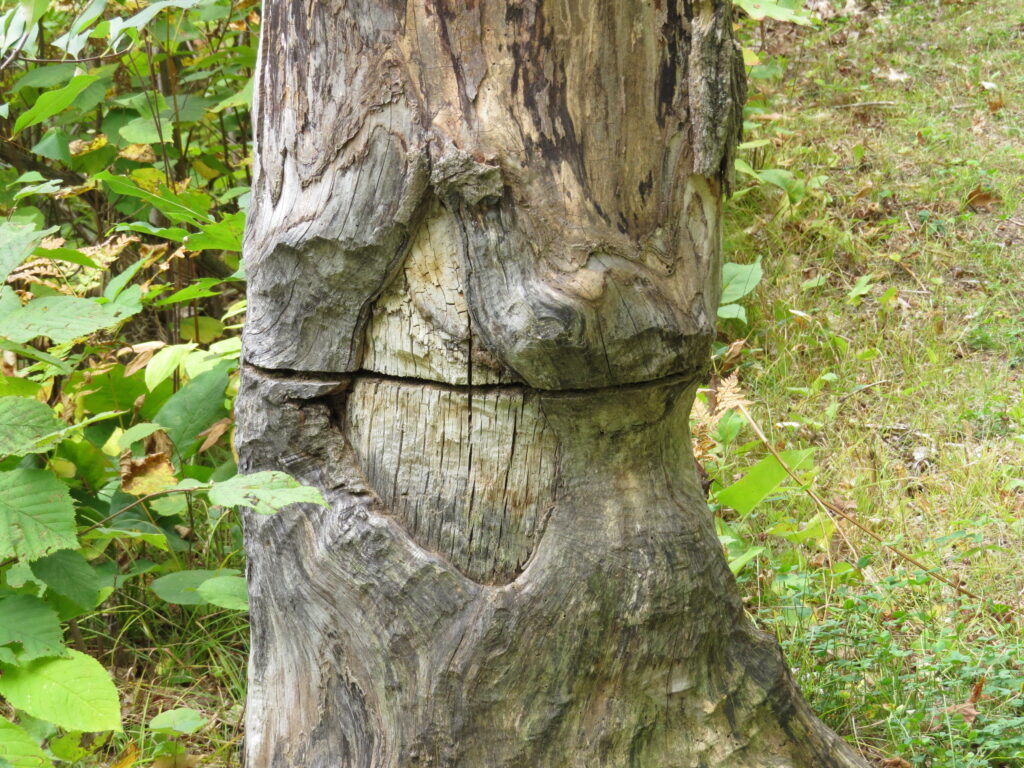
The one place where we were more on the level with Beaver Pond was a boardwalk that dissected the lowland area. A small open creek ran from the pond to an adjacent wetland where bare trunks of dead trees stood in the rushes.
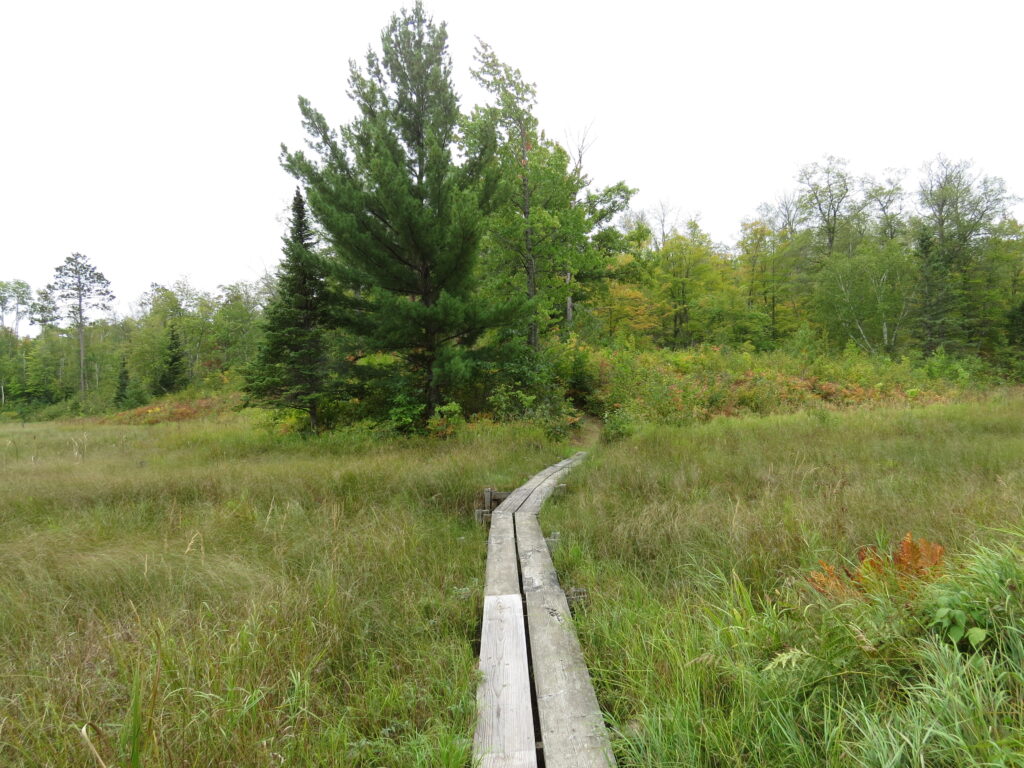
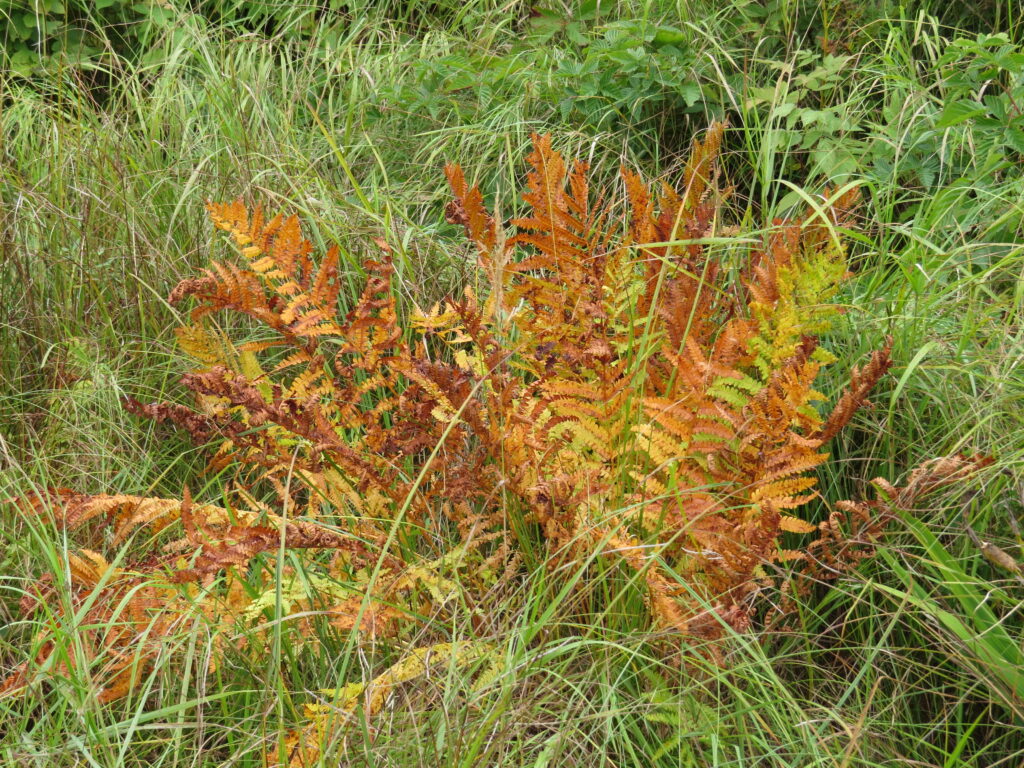
Water Shield is an aquatic plant that likes slow-moving water. They made up a puzzle of etched leaves, like little works of art.
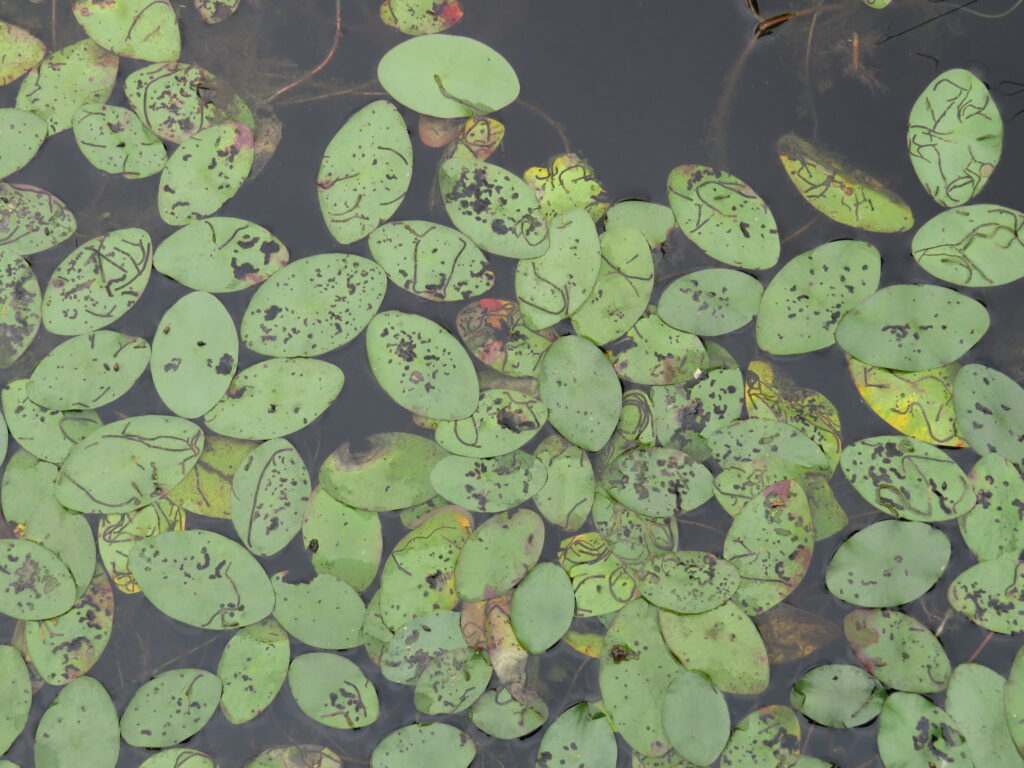
The third beaver lodge was just barely seen when looking towards the pond. A rhizome of Wild Calla made a fence through the creek but nothing to deter the hefty beavers.
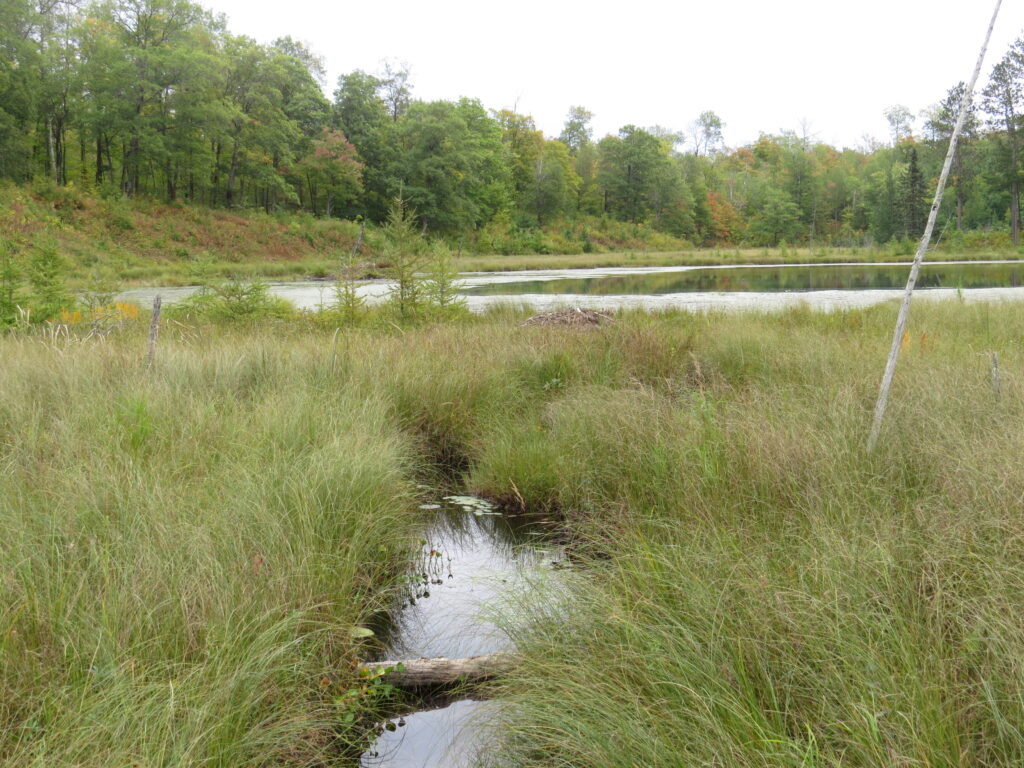
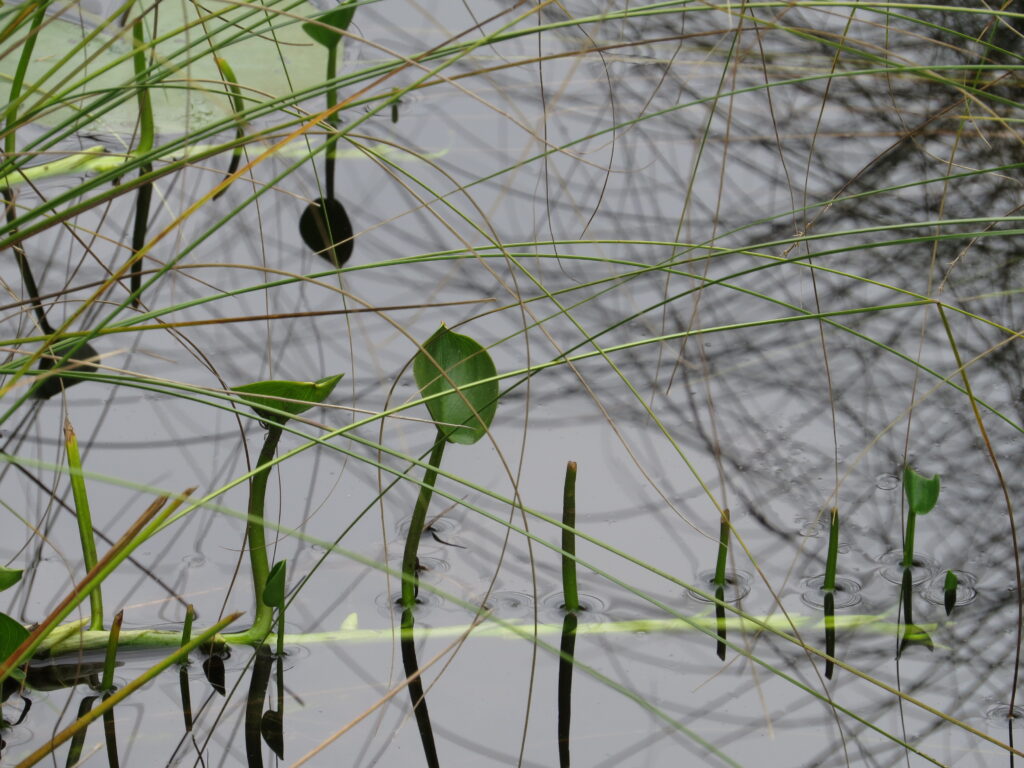
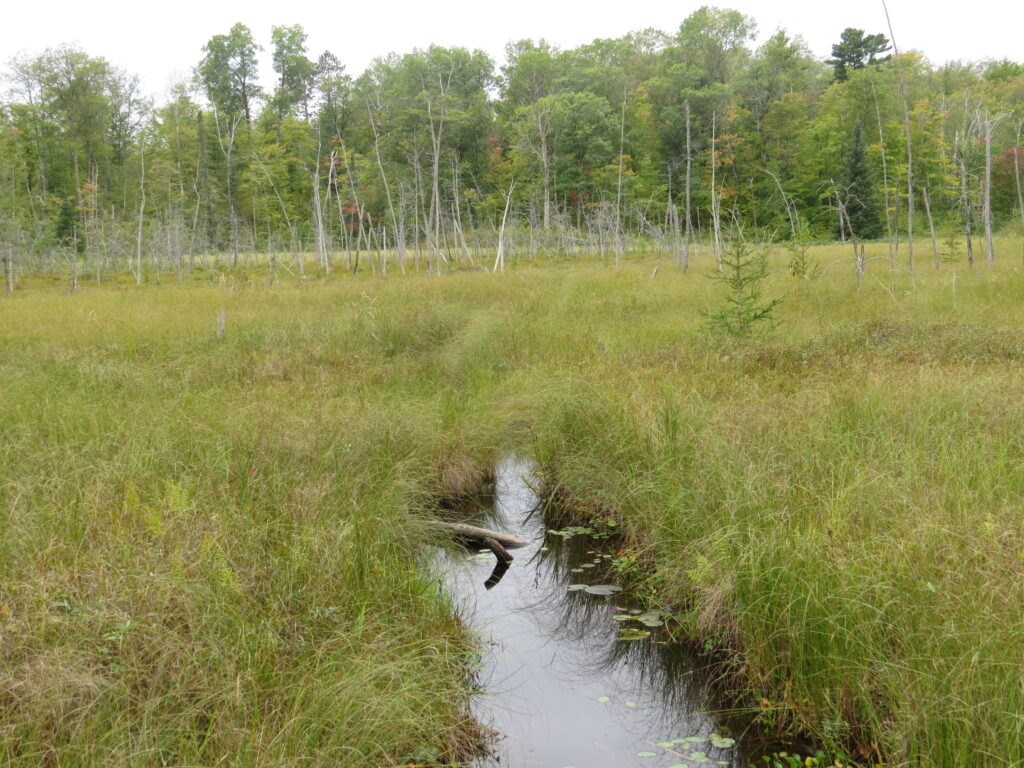
On the other side of the pond, we walked into the woods, losing sight of the water. Bright flowers of Orange Hawkweed grew along the trail. Its other name of Devil’s Paintbrush alluded to its invasive status.
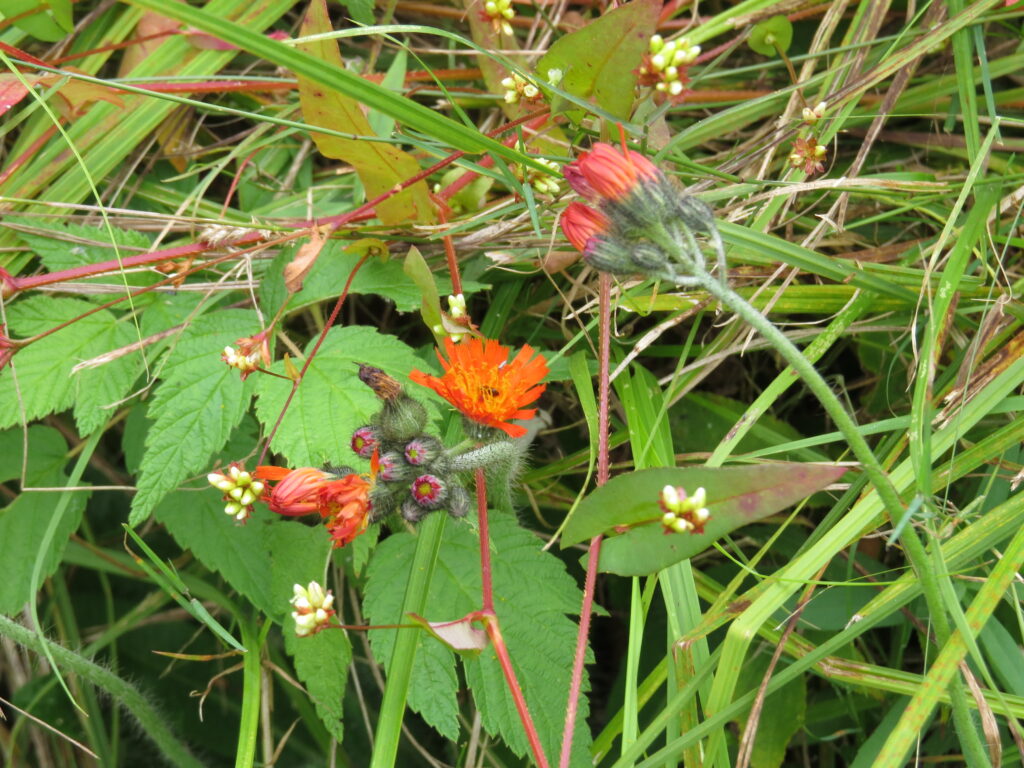
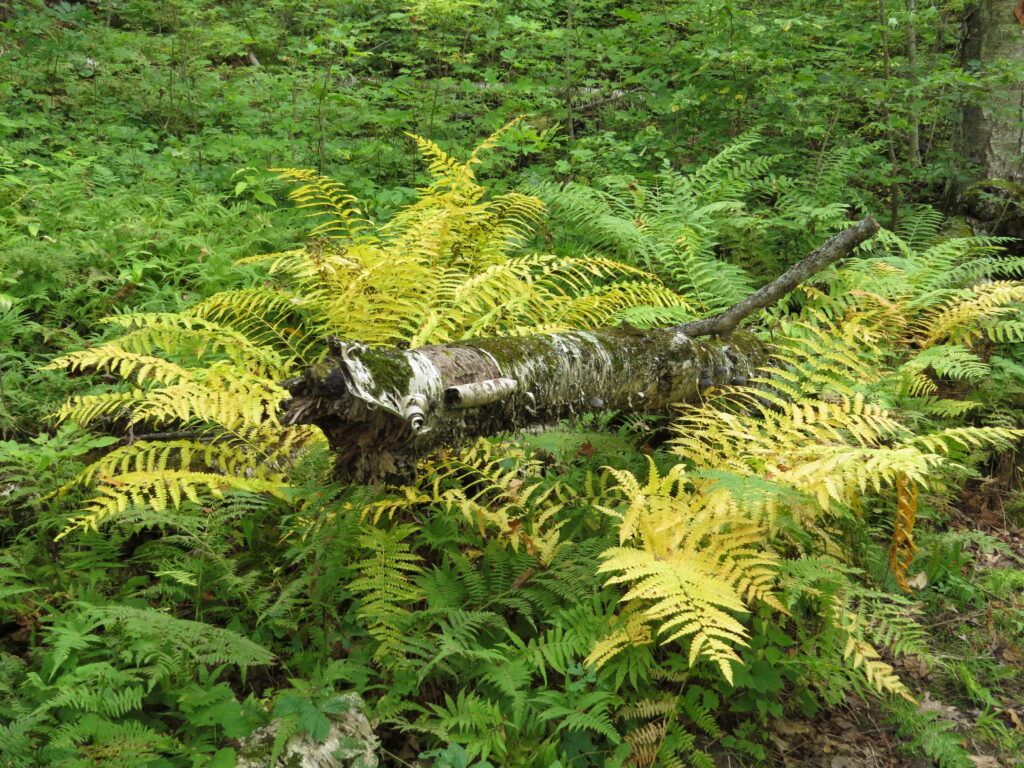
I found it amusing that the trail markers were Bigfoot signs. What happens when Beaver meets Bigfoot?
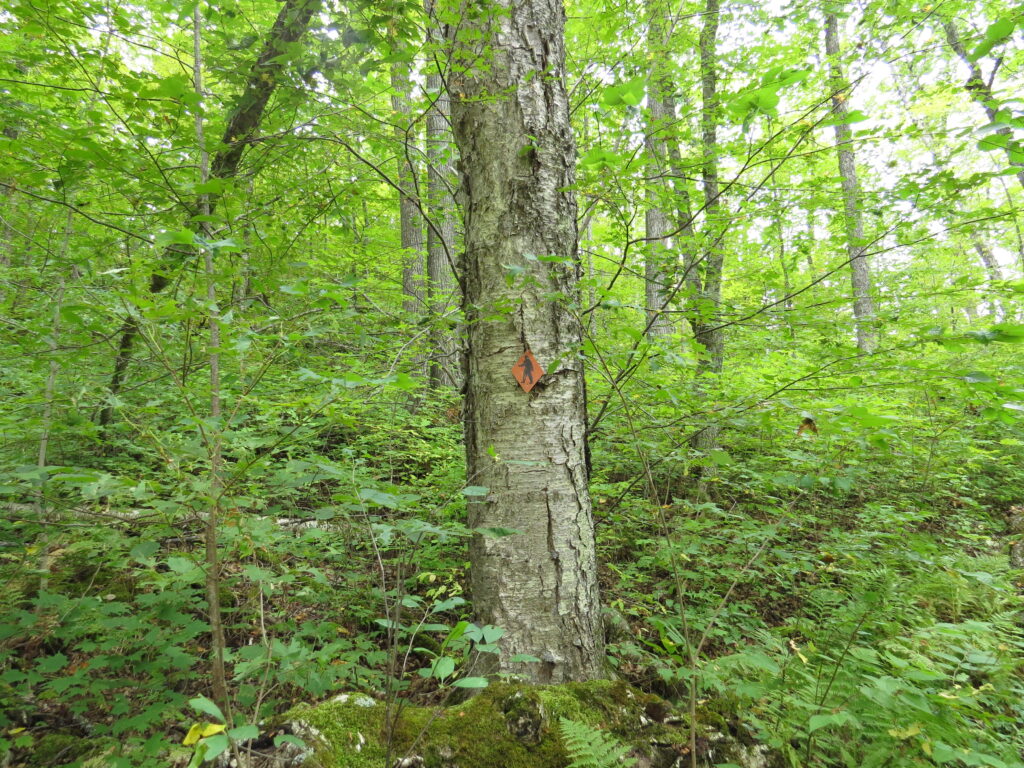
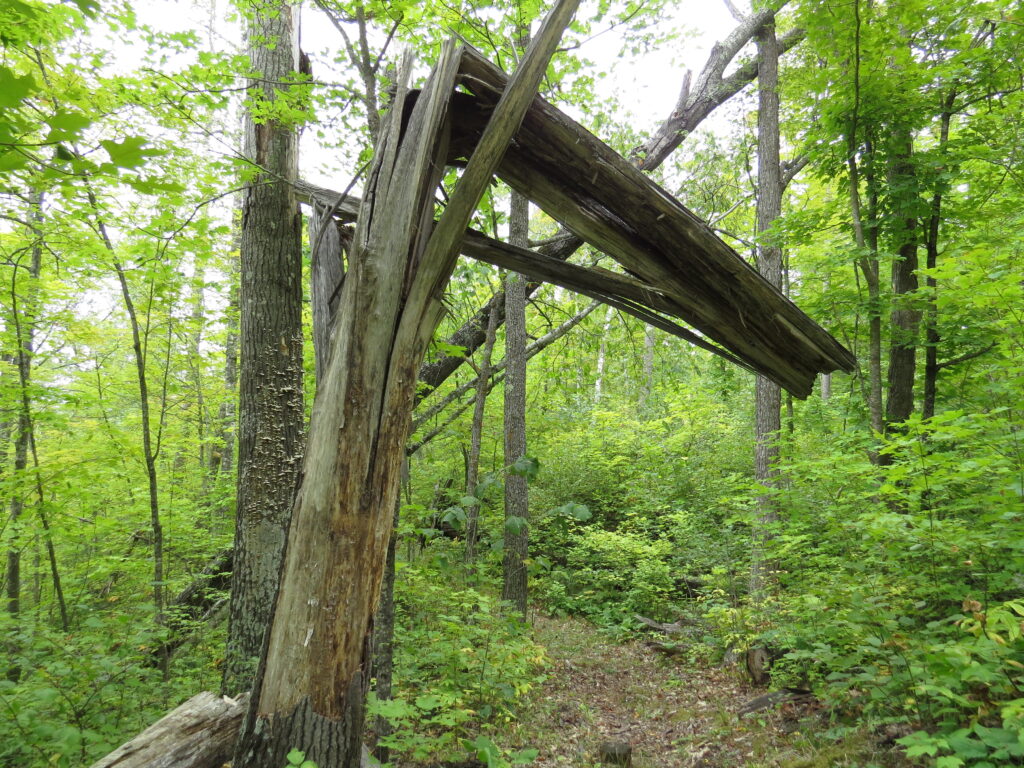
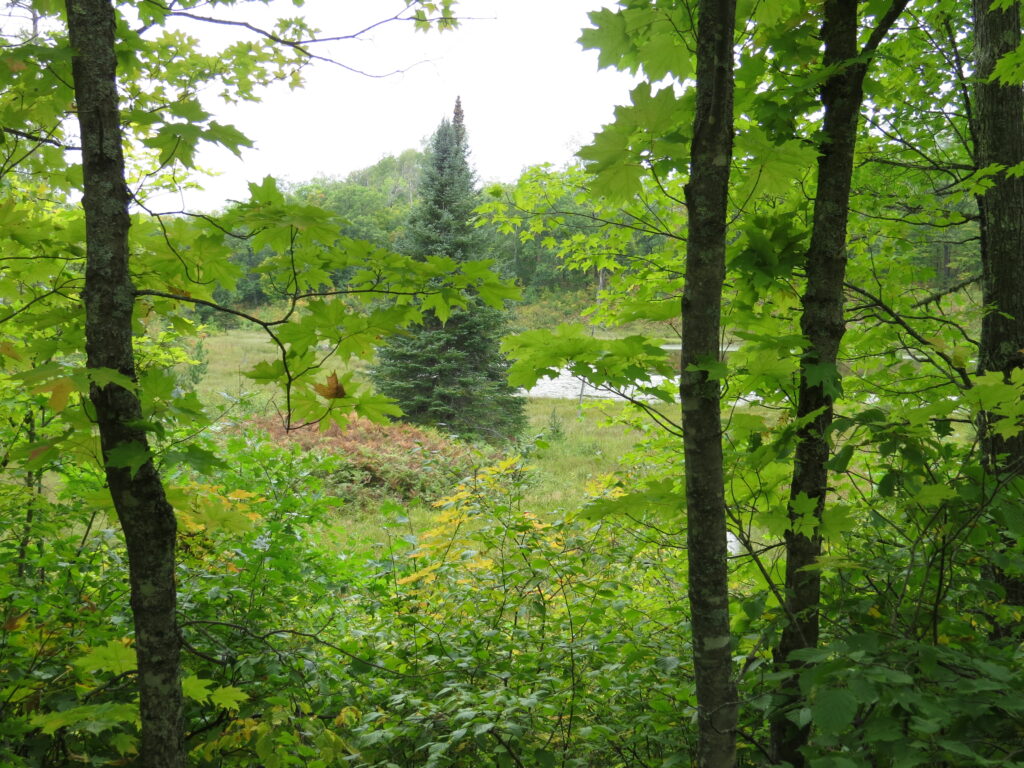
The Beavers lived in an idyllic place, a small glacial bowl surrounded by trees. They had plenty of building materials, plenty of food, and lots of neighboring animals and birds. They lived and worked with strength and tenacity, persistence and humility. Our Boundary Waters trip cultivated those characteristics in me—it was a master class in wilderness exploration, and a voyage into my own self. What’s your story of courage and persistence?